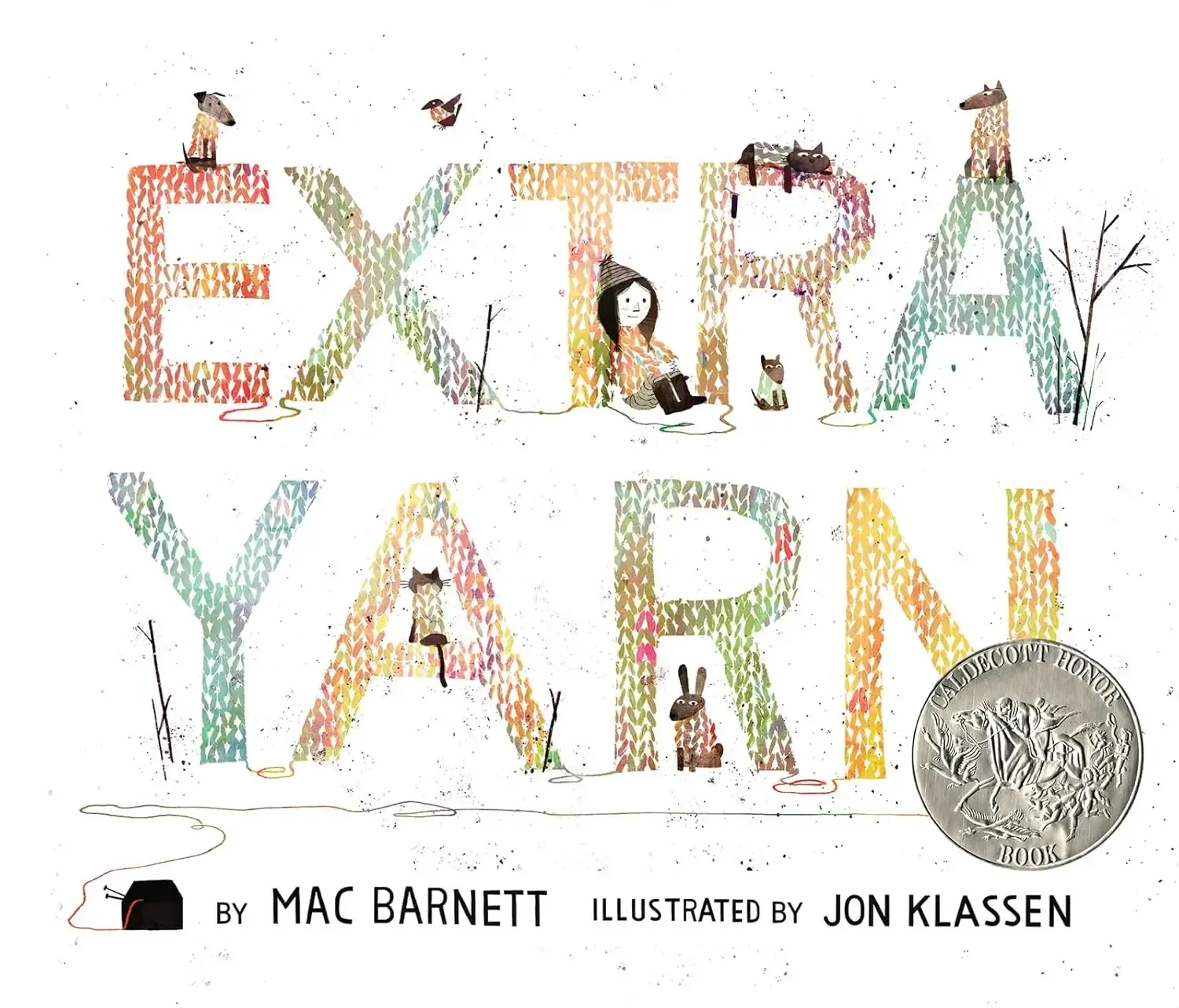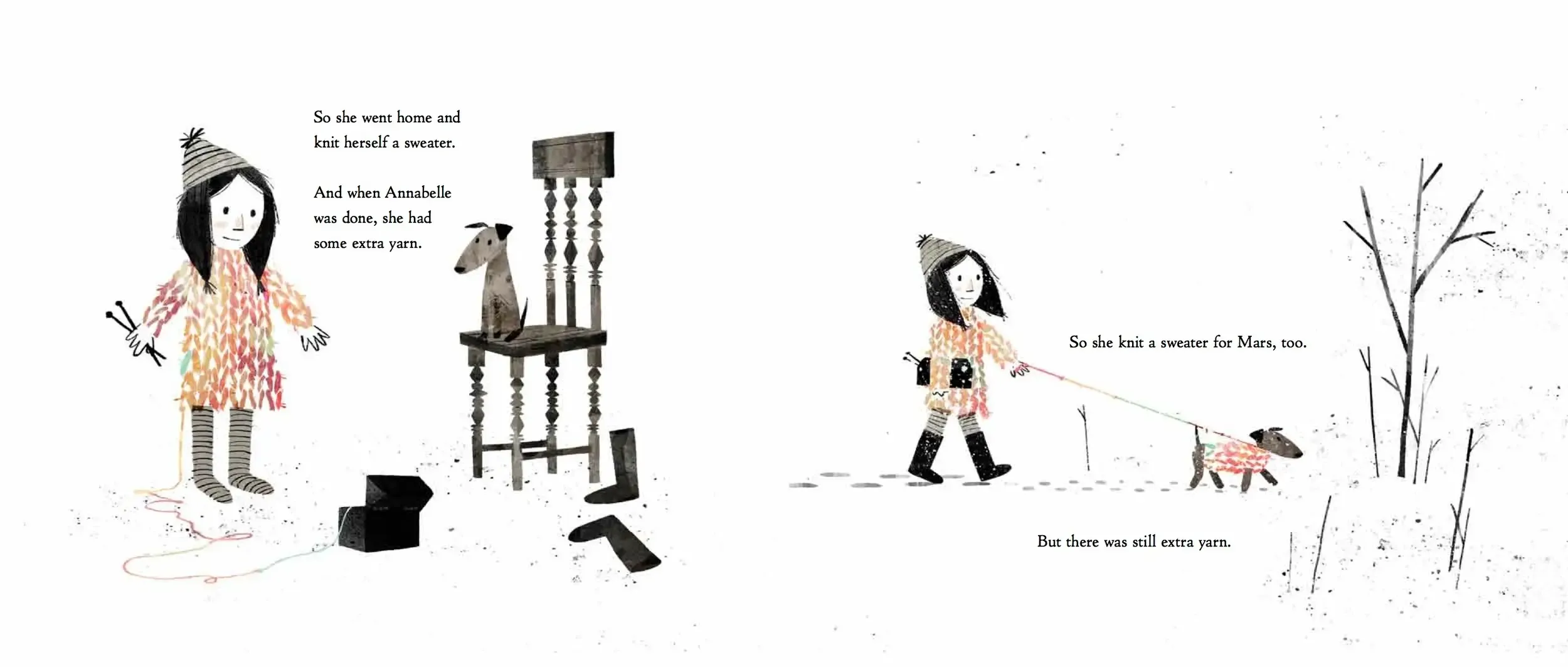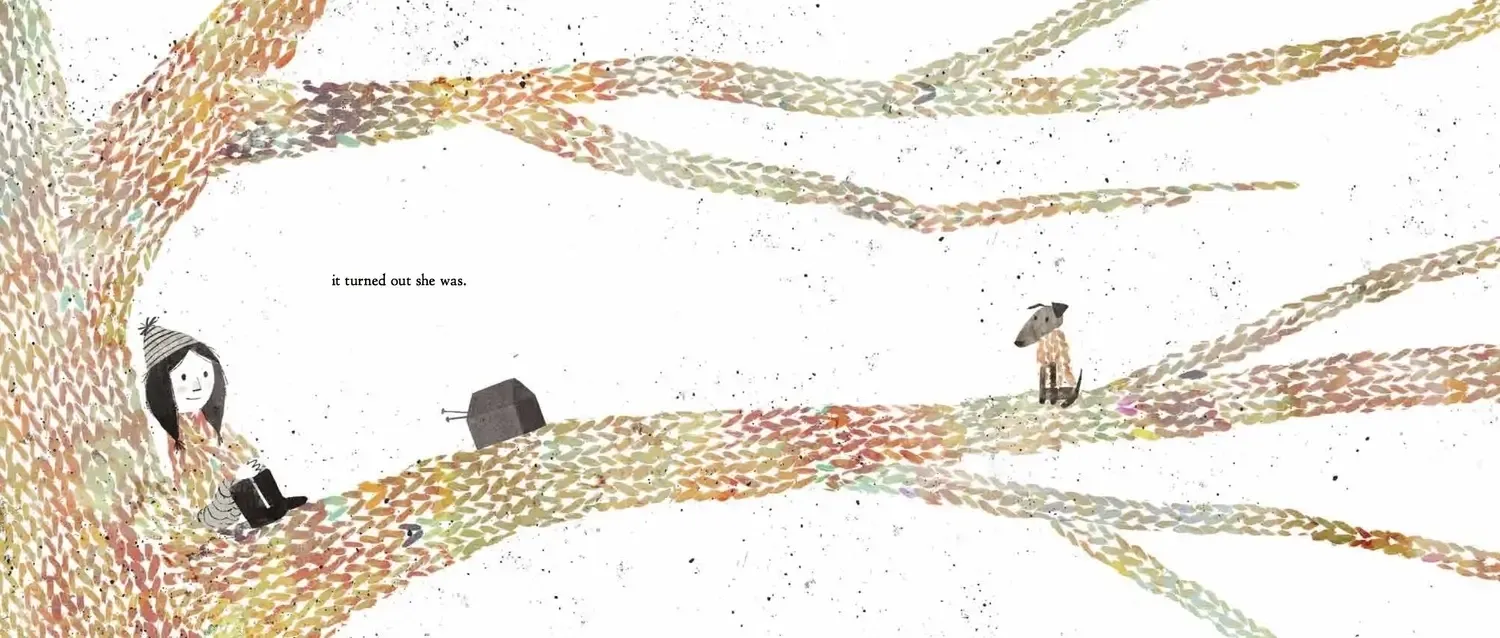Extra Yarn by Mac Barnett, illustrated by Jon Klassen, is a quiet, enchanting story about a little girl named Annabelle, who transforms her bleak, colorless town with an unexpected gift: a box of yarn that never runs out. In this beautifully written and illustrated tale, Annabelle begins with a simple act, knitting herself a colorful sweater, and soon discovers that no matter how much she knits, the yarn remains endless. She moves on to knitting sweaters for her dog, her classmates, the teachers, and even the trees, houses, and animals in her town. As her yarn spreads, so does joy, and soon the entire town is wrapped in warmth and color, thanks to her selfless creativity.
The brilliance of Extra Yarn lies in its simplicity, both in narrative and illustration. Mac Barnett crafts a story that feels almost like a modern fairy tale, full of understated magic and charm. There are no grand explanations for why the yarn never runs out, nor do we need them. The mystery of the yarn box is part of the book’s appeal, allowing young readers to wonder and imagine. At the heart of it all is Annabelle’s quiet determination. She knits not for fame or recognition, but for the simple joy of making the world around her brighter. Her selflessness is infectious, and her generosity turns a dreary town into a vibrant community, one stitch at a time.
Jon Klassen’s illustrations add to the magical quality of the story. His muted, grayscale palette creates a stark contrast with the colorful yarn that Annabelle spreads across her town. The town, initially depicted in tones of black, white, and gray, feels cold and unwelcoming, but as Annabelle knits, splashes of color begin to appear, bringing warmth to every page. Klassen’s minimalist style gives the book a sense of calm, letting the vibrant colors of Annabelle’s yarn stand out even more. Whether she’s knitting for her friends or covering the trees in colorful patterns, each piece of knitting feels like a burst of joy.
As Annabelle’s knitting continues, the story takes a whimsical turn with the introduction of a greedy archduke, who hears of the magical yarn and demands to buy it. When Annabelle refuses, saying that the yarn is not for sale, the archduke steals it, hoping to use the magic for himself. But in a satisfying twist, the yarn refuses to work for him, teaching a subtle lesson that true joy comes not from taking, but from giving. Annabelle’s quiet generosity is what makes the magic of the yarn so special, it is a symbol of the power of creativity and kindness, rather than something to be hoarded.
There is a timeless quality to Extra Yarn that resonates with readers of all ages. The simplicity of the text, paired with the magical, dreamlike nature of the story, makes it a perfect read-aloud, while its deeper themes of generosity and the dangers of greed offer plenty for young readers to think about. Without ever being heavy-handed, the story subtly explores the idea that true magic lies in how we use what we have to make the world a better place. Annabelle never asks for praise, and the magic works because she shares it freely, transforming her surroundings not through force, but through love and creativity.
In the end, Extra Yarn leaves a lasting impression. It’s a celebration of selflessness, creativity, and the beauty of giving. Barnett and Klassen have created a book that not only delights the eye but also warms the heart, reminding us all that sometimes the simplest things, like a box of yarn, can bring the most profound changes.
Questions to ask while reading:
- How does Annabelle's knitting change the town?
- Why do you think the archduke wants the yarn?
- What does the yarn symbolize in the story?







